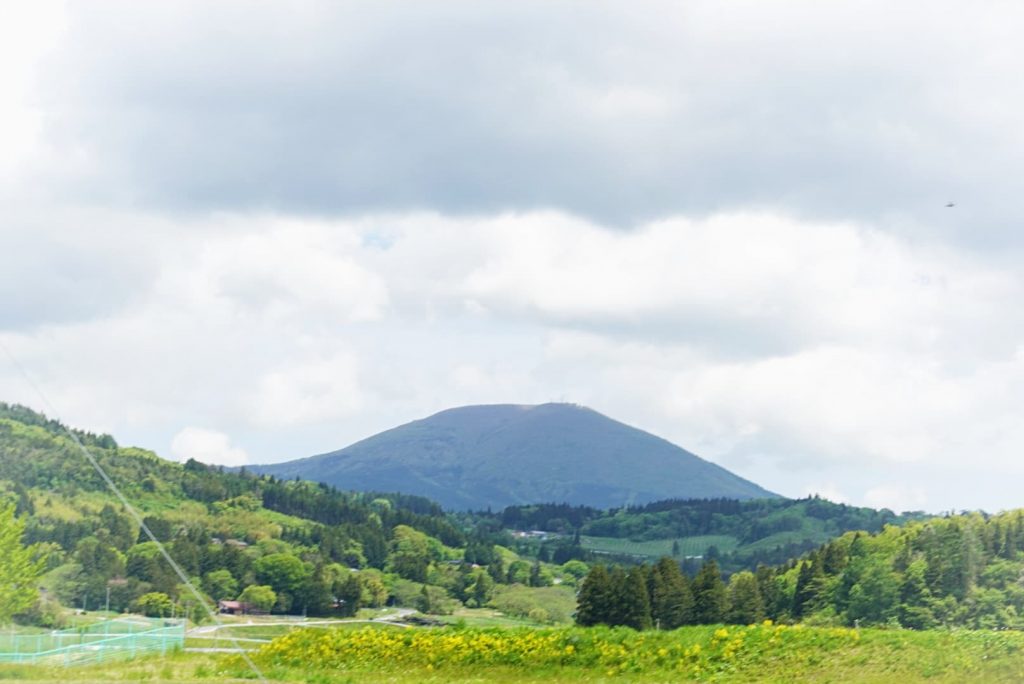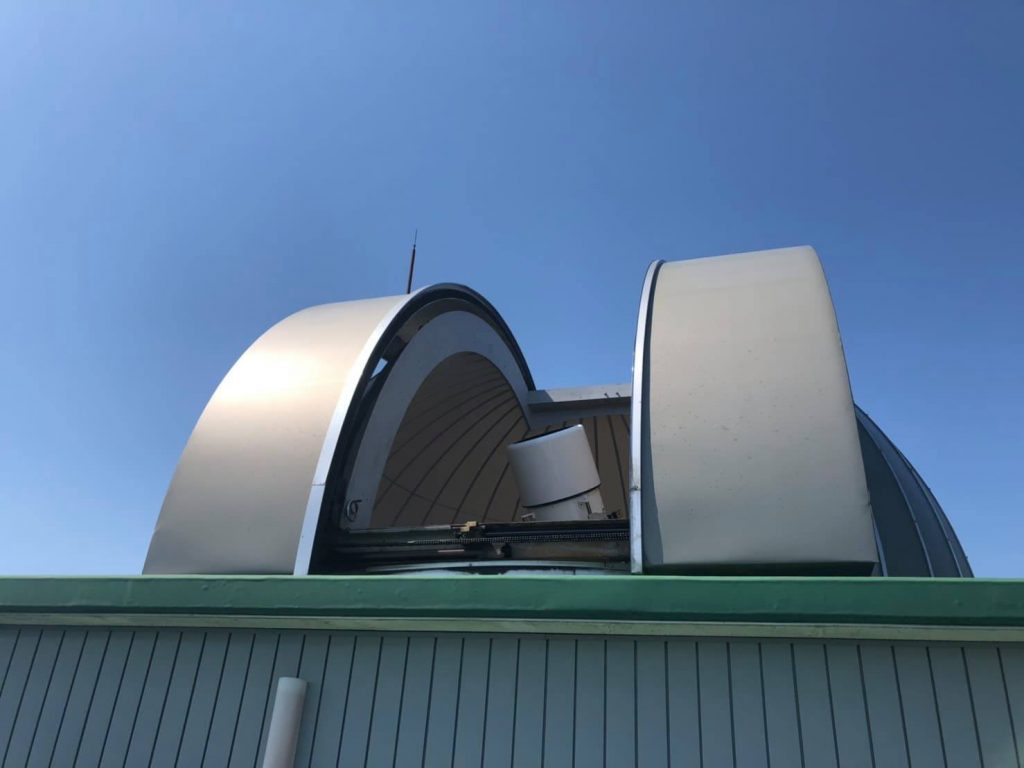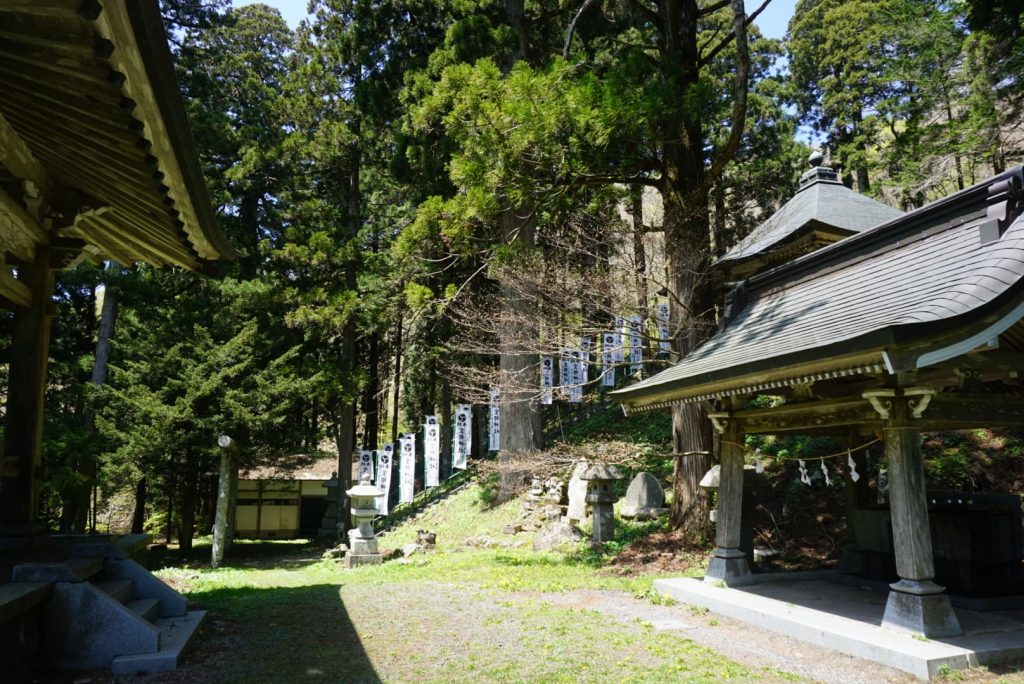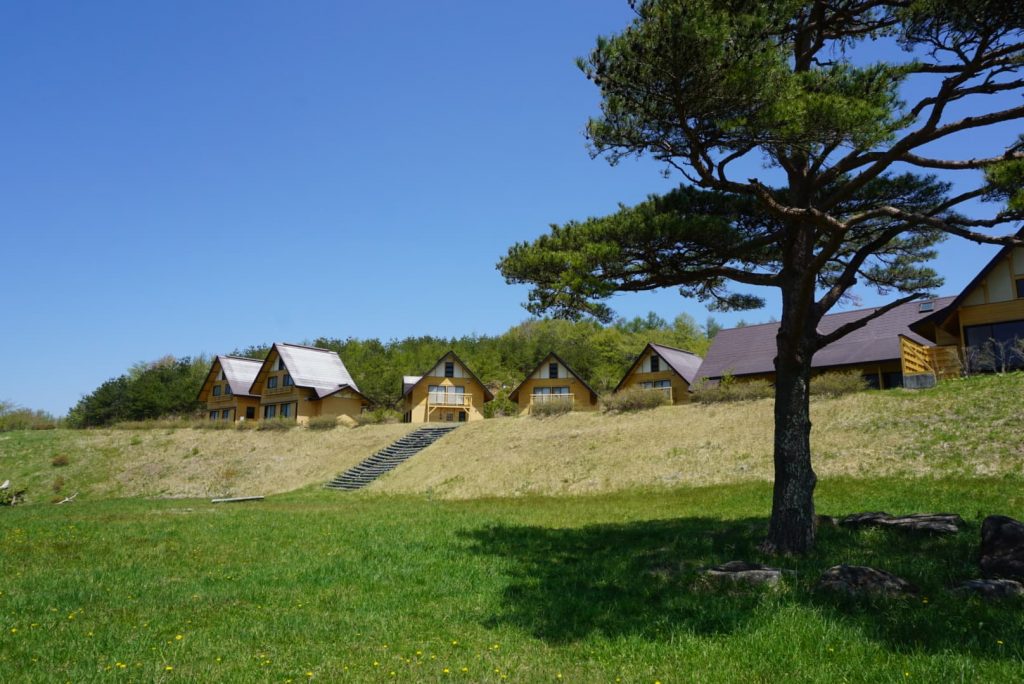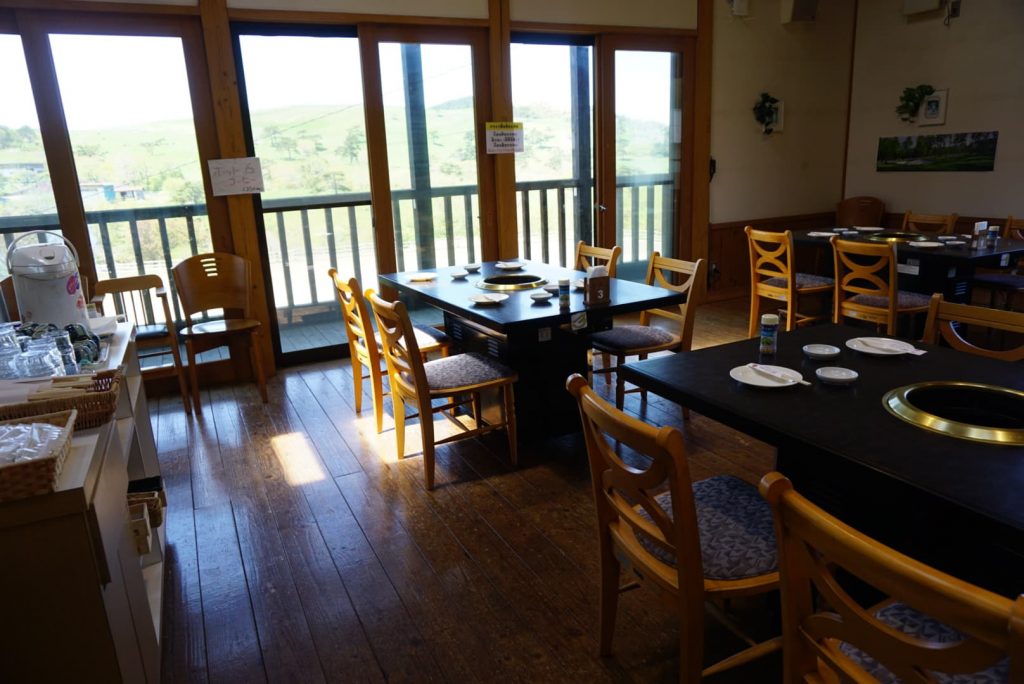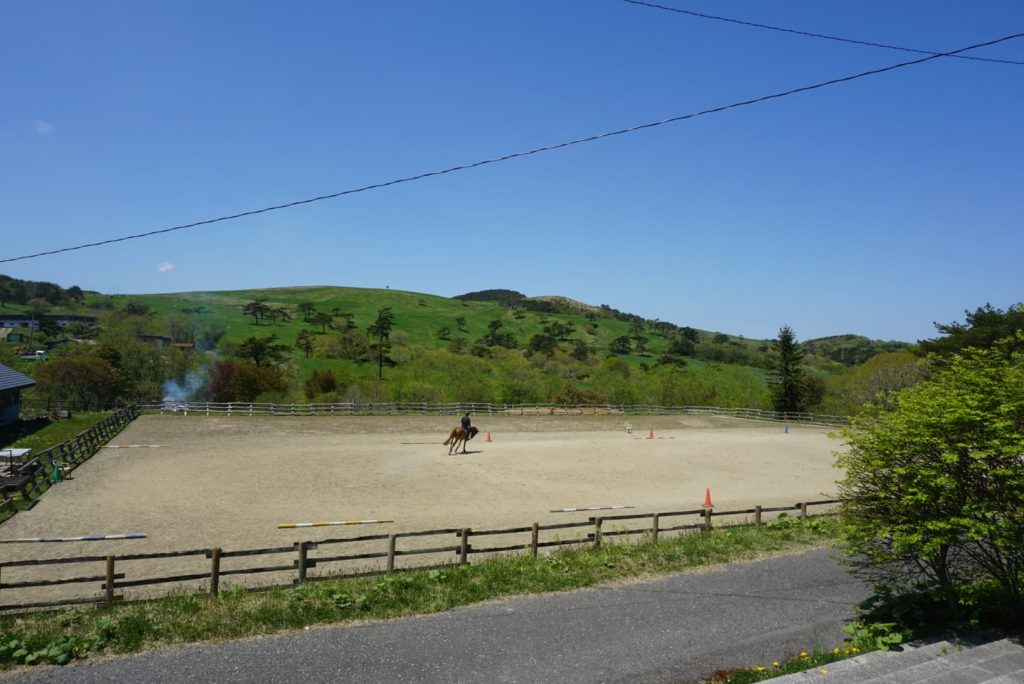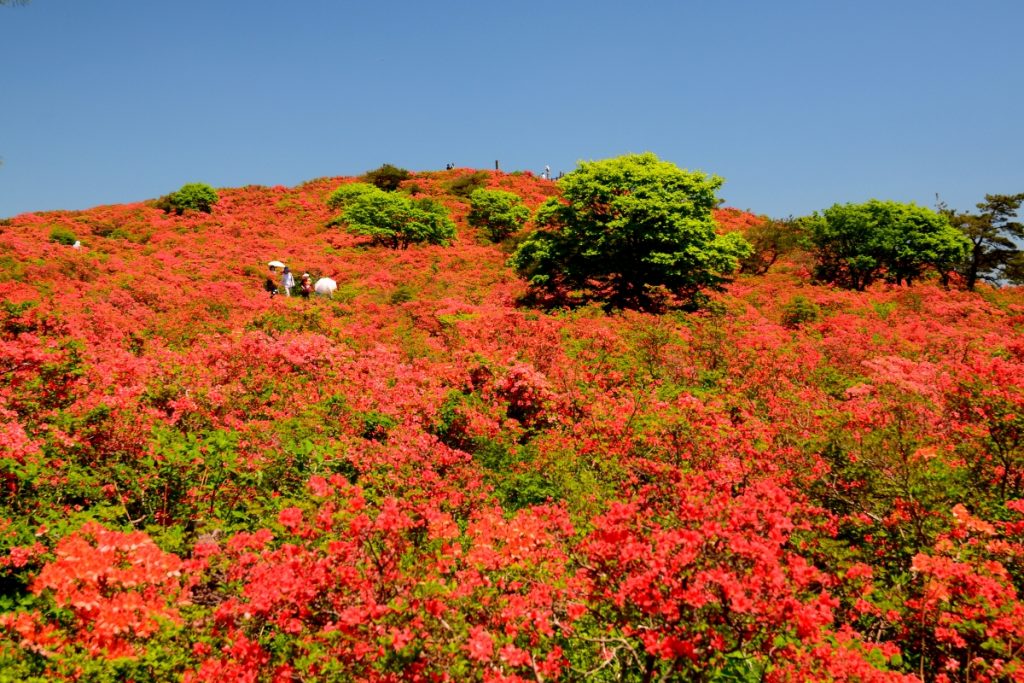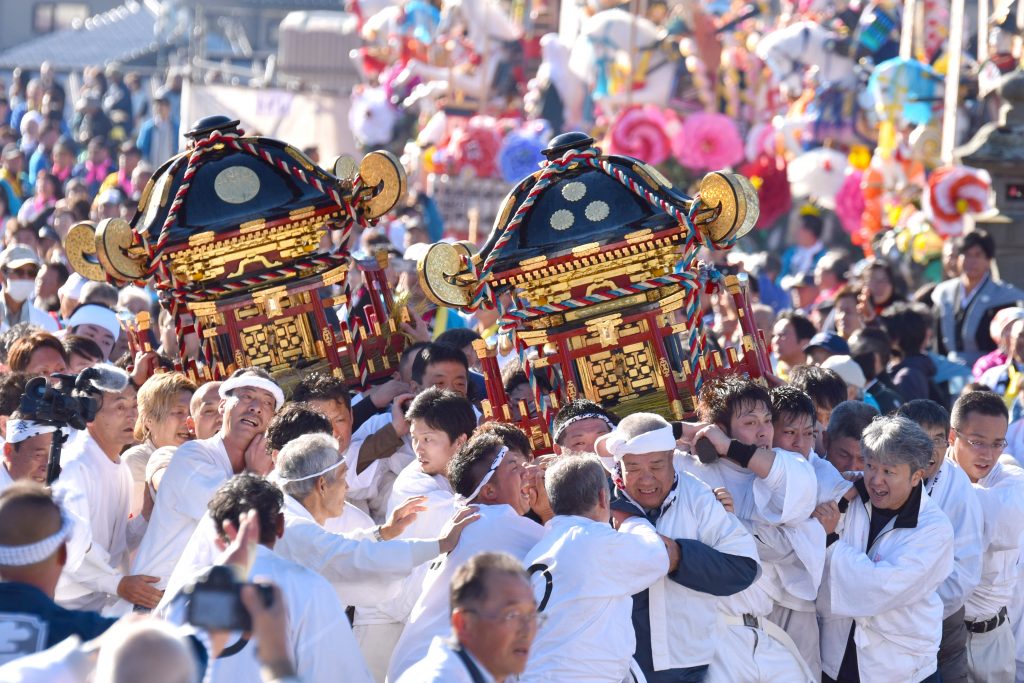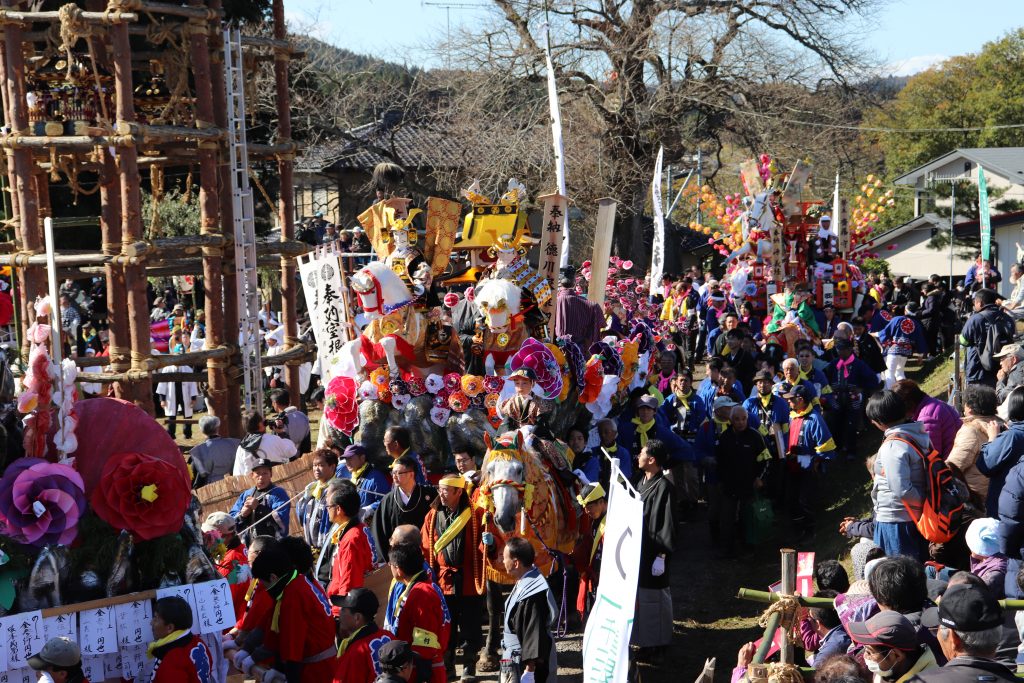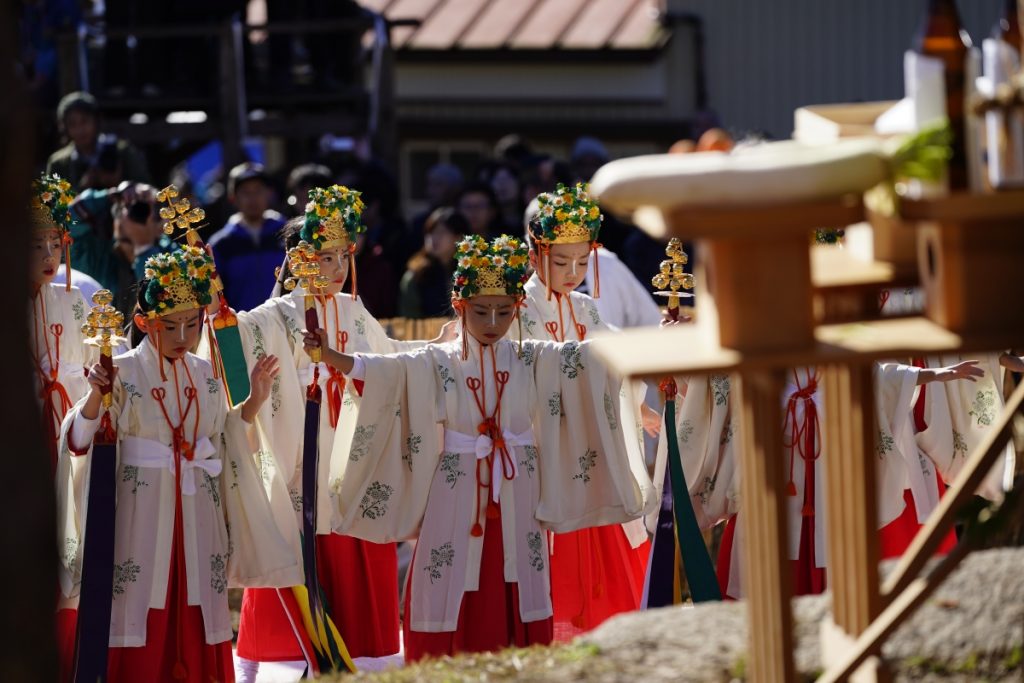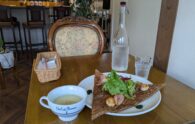The Kitakami Mountains run through Ichinoseki, with a single peak, that of Mount Murone, dominating the skyline. The name might sound familiar, and that’s because this mountain overlooks the ILC candidate site, providing an excellent visual of where the ILC would run. Near the peak of the 895m tall mountain, there’s a 360-degree panoramic view extending to the Pacific Ocean. Here, the cities of Kesennuma (Miyagi Prefecture) and Oshu can be seen. There’s much more to this mountain than its beautiful views though; it’s a recreational wonderland!
If hiking is your thing, it’s a relatively steep 2.5 hour climb from Orikabe Station to the summit; for the majority of people, driving up by car is the best option. Here are some of the exciting facilities, activities and events that can be experienced on this mountain.
Astronomical Observation at Muronesan Kirara Observatory
It’s easy to tell Mt. Murone apart from its surroundings as there’s an observatory peeping out close to the summit! The observatory serves as a means to promote astronomical and scientific education and can be enjoyed both day and night by the utilization of its two telescopes – the most impressive being the 50cm Cassegrain reflector telescope. In the daytime (between 13:00pm~16:30pm, April to November), a filtered telescope allows you to observe our closest star, the Sun! At night (between 19:30 to 21:30, April to November) the observatory carries out shows as well as viewings of various celestial objects (my favorite is M13).
Although the opening hours may be a little restrictive (I suggest going on a Fri, Sat or Sun) the 360 degree panoramic view of Ichinoseki and its neighboring cities is accessible at any time of day.
Murone Shrine
Murone Shrine is located at the 8th climbing station of Mt. Murone and is divided into two shrines called ‘Hongu’ and ‘Shingu.’. Its history stems back about 1,300 years and it has rich ties to Wakayama Prefecture’s Kumano Taisha Shrine. Murone Shrine is the starting point of Murone Shrine Festival (a National Important Intangible Folk Cultural Asset) which I’ll introduce a little later on.
Camping and accommodation
Boyotai Campsite
Imagine waking up to the view of a sunrise over a sea of clouds. This camping ground is also found at the 8th station, and at the entrance is the Nature Center where you can get information about the campsite and sign in if you are looking to stay. Tents and other camping equipment can be rented. Different sized bungalows are available ranging from 3~8 persons. Facilities include barbecues and a campfire area.
Astro Roman Campsite
This campsite is for both children and adults. Facilities here include trail biking, barbeques, tennis courts, track and field, and slides.
These new bungalows provide views of lush green expanses. Facilities nearby includes a Bunko dining area and a bath. The dining area serves udon and soba noodles.
Restaurant
The main restaurant on Mt. Murone is Bokujo no Restaurant which specializes in lamb barbecue, but also has pizza!
Thrills
Horseback Riding
Michinoku Horseback Riding Club offers Western and English riding that caters to all types of riders; from beginners to pros, and casual to serious riders alike. There’s an indoor area so you can ride rain or shine!
Paragliding
MAPS Paragliding School offers fun and safe experiences that give you the best views around! There are various courses including paragliding by yourself while learning the basics from an instructor, as well as ones that allow you to go 700m up in the air with an experienced instructor!
Seasonal Pleasures
Azaleas
Mt. Murone has a large array of flora such as cherry blossoms, trillium, and dog-tooth violets but it’s best known for its 200,000 bright pink azaleas that blanket the mountain at the start of summer (late May to early June).
Bird Watching
Pheasants, white wagtails, Japanese white-eyes, and varied tits are among some of the species you may encounter on Mt. Murone. At the campground’s entrance, there is a nature center that can introduce you to the birds and plants that can be seen on the mountain at the given season.
Murone Shrine Festival
The Shrine Festival is a spiritual Shinto festival that occurs once every few years (on a leap year), preserving 1,300-year-old traditions and designated as a ‘significant intangible folk-cultural asset’. The roots of this festival stem from a ‘bunrei,’ which is a Shinto term for dividing a god and enshrining it somewhere else, and also refers to the spirit that was divided. This bunrei is of a Kumano deity from Wakayama in southern Japan, and Murone Shrine enshrined the deity.
The festival is a three day affair which starts at Murone Shrine (at the 8th station of Mt. Murone) where the spirit is transferred into two ‘mikoshi’ (a portable miniature shrine) to represent the Hongu and Shingu shrines. From there, both of the mikoshi are carried towards the ‘Matsuriba,’ or place of the festival, which is located 10kms away. Throughout the night, divine helpers and their horses strive toward the Matsuriba, guided by the dim light of the lanterns and to the sound of taiko drums and Japanese flutes.
Drawing closer to the climax of the festival, the mikoshi jostle and clash to get to the Matsuriba first where a 7m tall, temporary shrine awaits. The mikoshi are hoisted up the temporary shrine – it’s a race to the top (this is the part I recommend you see as it’s the most exciting and least restrictive – there are some parts of this festival where women are not allowed to watch or participate in)! Once both mikoshi reach the top, the spirits are enshrined in the temporary shrine and a ceremony for a rich harvest is performed.
Access and further information
This is a map to show the attractions mentioned in the article
(drive.google.com/open?id=1azbFA6Rx-xl-OJJy3ZOTdz8eJAOjDLS8&usp=sharing)
By car
From the Tohoku Expressway, exit from the Ichinoseki IC exit. Mt. Murone is about 1hr 30mins from the IC.
Train
The closest station, Orikabe Station, is 1hr 10mins from Ichinoseki Station on the JR Ofunato line.
For further information, contact Ichinoseki Tourist Information (a tourist information center located right outside of Ichinoseki Station)
* Webpage: https://tic.jnto.go.jp/detail.php?id=1027.
Japanese
いわての自然・文化・歴史を楽しもう!~室根山~一関市 ILC国際化推進員
あいみ・ベル
室根山: 一関を通る北上山地に1か所、地平線に高くそびえる室根山があります。名前はお馴染みかもしれません。それはこの山がILC候補地を見渡せる位置にあり、ILCが伸びていく方向を見通すのに最適な場所だからです。標高895mの山頂付近では、太平洋まで見渡せる360度のパノラマビューが広がります。ここでは、気仙沼市や奥州市までも眺めることができます。室根山の良さはその景色の美しさだけでなく、レクリエーションの豊富さも魅力となっています。
【写真】
ハイキングがお好きな方には、折壁駅から山頂まで約2時間半かかる、比較的急な勾配の登山道があります。また、登山だけでなく、自動車で山頂まで行くことも可能です。以下、室根山で体験できる楽しい活動やイベント、施設などをご紹介していきます。
きらら室根天文台:
【写真】
室根山は、頂上近くに天文台が顔を出しており、周辺の山々と比べると見つけることが簡単です。この天文台は、天文学及び科学の教育に役立っており、昼夜を問わず、その2つの大きな望遠鏡(最も印象的なものは50cmのカスグレン反射器望遠鏡)を楽しむことができます。昼(13:00~16:30/4月~11月の期間)には専門のフィルターが取り付けられた望遠鏡で、私たちから最も近い恒星である太陽を観察することができます!夜(19:30~21:30/4月~11月の期間)には、様々な天体を観察することもできます。開館時間に若干の制限がありますが、閉館時間中でも、ここから一関や周辺の町、360度のパノラマ風景を楽しむことができます。
室根神社:
【写真】
室根神社は室根山の8合目に位置し、「本宮」と「新宮」の2社が奉られております。この神社は約1,300年もの歴史があり、和歌山県の熊野大社と深い関わりがあります。室根神社は、(重要無形民俗文化財に指定されている)室根大祭の開始地点となっていますが、それはのちにご紹介します。
キャンプ・宿泊:
『望洋平キャンプ場』: 目覚めた時の雲海に昇る日の出の景色を想像してみてください。このキャンプ場も8合目にあります。キャンプ場入口にある「ふるさと自然公園センター」では、キャンプ場に関する情報提供や宿泊の受付をしており、テントや他のキャンプ用品もレンタル可能となっています。3人~8人向けの、サイズの異なるバンガローもあり、バーベキュー設備、キャンプファイヤーエリアも備えられています。
『アストロ・ロマン大東』:
【写真】
アストロ・ロマン大東は、子供から大人まで楽しむことができる施設です。トレイルバイク、バーベキュー、テニスコート、アスレチック設備、そして滑り台が備えられています。
『大東ふるさと分校』: 大東ふるさと分校からは、緑豊かな広大な景色を眺めることができます。施設内には分校食堂や浴場があります。分校食堂では、うどんやそばが提供されています。
レストラン:
【写真】
室根山には、もう1か所「牧場のレストラン」があります。ここではジンギスカンがメインですが、ピザもあります!
乗馬:
【写真】
『風薫る丘みちのく乗馬クラブ』ではウエスタン、ブリティッシュなどの乗馬ができ、初心者から経験者まで楽しめます。屋内馬場もあるので、雨の日・晴れの日を問わず、乗馬を楽しむことができます。
パラグライダー:
【写真】
『MAPSパラグライダースクール』では、楽しく・安全に絶景を眺められます。基本を学びながら1人でのパラグライダー体験や、経験豊富なインストラクターとともに700mを飛ぶ体験など、様々なコースがあります。
ツツジ:
【写真】
室根山には、桜、エンレイソウ、カタクリなど沢山の植物がありますが、夏の始まり(5月下旬から6月上旬)に山を彩る、約20万本の鮮やかなピンクのツツジの群生が有名です。
バードウォッチング: 山ではキジ、ハクセキレイ、メジロ、ヤマガラなど多くの種類の野鳥に出会えるかもしれません。室根キャンプ場の入口には自然公園センターがあり、季節ごとに見られる鳥や植物を紹介しています。
室根神社特別大祭:
【写真】
数年に一度(閏年の年に)行われる室根大祭は、1,300年前の伝統を今に伝える「重要無形民俗文化財」指定のお祭りです。この祭りの始まりは、今から約1,300年前、和歌山県熊野大社からの分霊が当地に坐したことに由来し、室根神社「本宮」と「新宮」に祀られています。
【写真】
室根大祭は3日間に渡り行われます。スタート地点の室根神社から、「本宮」と「新宮」の御輿が、10キロ先にある祭場に向かいます。御輿を担いでいる参加者と馬は、提灯の光、太鼓や笛の音とともに“マツリバ”を目指し夜通し駆け下ります。
【写真】
祭りのクライマックスは、二体の神輿は激しくもみ合いながら“マツリバ”に向かい、そこにある高さ7メートルの仮宮に安置されるところです(この場面は特に圧巻で、見学の規制も少なく一番のお勧めです。なお、ほかの場面では、女性の立ち入りを禁止するところもあります。)。この仮宮に神輿が到着した後、神事が行われ、舞姫の踊りなどが奉納されます。
アクセスと情報
【地図】
車で行く場合: 一関IC-> 室根山 (1時間30分)
JR線: 一ノ関駅―>折壁駅 (1時間10分)
お問い合わせ先:室根総合開発株式会社
詳しくは:http://www.muronet.co.jp/
.jpg)
